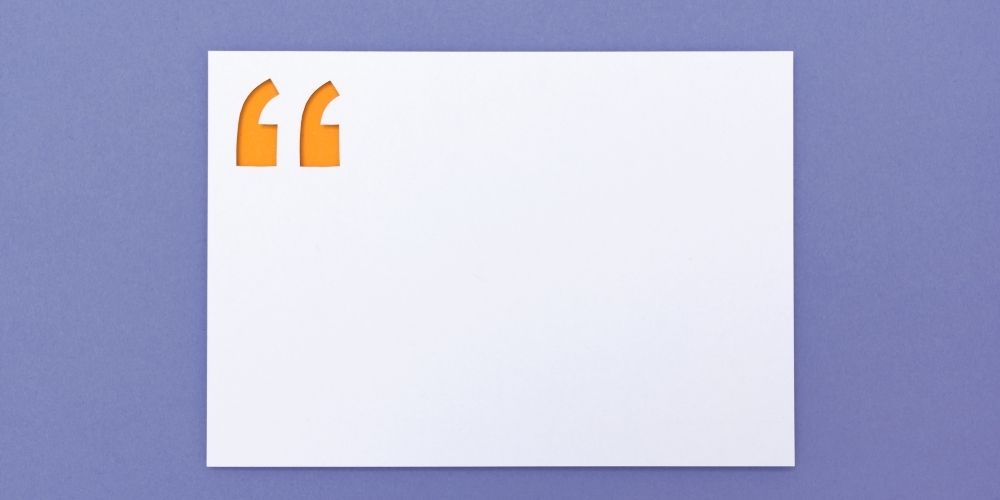In academic writing, citation serves as a bridge that connects original ideas with their rightful originators. It is a tool that fosters a culture of acknowledgment, accountability, and intellectual honesty.
By attributing ideas to their sources, authors honor the pioneers and contributors of a subject and provide a roadmap for readers to delve deeper. This intricate process of linking ideas to their sources has given rise to various citation styles, each tailored to the unique needs of different academic disciplines.
These styles are not just about giving due credit; they reflect the evolution of academic discourse and the ever-changing research landscape.
Here is all you need to know about citation styles:
What is a Citation?
Citation is the cornerstone of responsible academic writing. Think of it as an entry ticket to a world of academic conversations where scholars present ideas, discuss them, and build upon the works of their predecessors. Its an essential part of every research paper writing format.

In essence, a citation is the method by which authors give credit to the sources of the information or ideas they use in their writings. It acknowledges the original author’s contribution and provides readers with a roadmap to trace the original source. This way, readers can delve deeper into topics, understand the original context, or even critique the source.
Understanding the Core of Citation:
A citation, in its most distilled form, is a structured way of giving credit to the original source of information or ideas utilized in a piece of writing to overcome writing challenges. This acknowledgment is two-fold: it recognizes and respects the original author’s efforts and serves as a beacon for readers to trace the origin of a particular thought or piece of information.

By doing so, readers are empowered to immerse themselves deeper into the subject, understand the nuances of the original context, or even challenge and debate the veracity of the source.
The benefits of citations are manifold:
Accountability: We live in the Information Age, a time of unprecedented access to knowledge. This plethora of information makes it challenging to discern between authentic, original content and derivative works. Citations act as markers, clearly delineating between the two, ensuring intellectual integrity.

Traceability: The academic realm thrives on continuous learning. Curious readers, researchers, and scholars often desire to journey back to the primary sources to glean more insight or pursue tangential lines of thought. Citations function as signposts, guiding them back to the foundational works.
Credibility: Grounding assertions and claims in well-established research augments the strength of an argument. Citations add a layer of validation, enhancing the trustworthiness and persuasiveness of the writer’s content.
Exploring the Diversity of Citation Styles:
The broad spectrum of academic disciplines has led to the emergence of multiple citation styles, each tailored to meet its specific needs:
APA (American Psychological Association): Initially crafted to serve the psychology realm, APA has gained popularity across numerous social sciences disciplines. Its defining feature is its emphasis on the author’s surname and the publication year, reinforcing the timeliness and relevance of the referenced work.
MLA (Modern Language Association): A darling of the humanities, especially among literature and cultural studies specialists, MLA stands out with its accentuation of the author’s surname and explicit page numbers, directing readers to the precise origin of a referenced idea.
Chicago/Turabian: This style’s duality is its strength. With its notes and bibliography system, it finds resonance among humanities scholars, offering rich footnotes complemented by an exhaustive bibliography. On the flip side, its author-date system, favored by the sciences, champions succinctness.
Harvard: Emerging from the hallowed halls of Harvard University, this style, with its author-date format, has garnered global appeal. It strikes a fine balance, offering readers condensed yet pertinent details about a source.
Vancouver: A beacon in the fields of medicine and science, the Vancouver style is sequential in nature. Every source is assigned a unique number based on its order of appearance, leading to concise in-text citations.
IEEE (Institute of Electrical and Electronics Engineers): Crafted to cater to the specificities of technical domains, IEEE mirrors Vancouver in its core approach but is finetuned to handle the intricacies of technical writing.
Delving into the Uses of Citation Styles:
Though the primary aim of citation styles is to attribute and credit ideas, a deeper exploration reveals an intricate tapestry of uses:
Consistency Across Writings: A uniform citation style across a particular discipline engenders coherence. Knowing the standardized style enables efficient source referencing and understanding whether one is a seasoned researcher, a student, or a professional.
Clarity and Precision: Citations bolster claims. By directing readers to the foundational work, they can cross-check and authenticate the writer’s contentions, enriching the reading experience.
Safeguard Against Intellectual Theft: The specter of plagiarism looms large in academic writing. Citations serve as a bulwark, ensuring that all borrowed concepts, thoughts, or data are aptly credited, preserving a writer’s reputation.
Deciphering the Differences Between Citation Styles:
While the overarching aim of every citation style is to attribute credit, their modus operandi differs:
APA: Puts a premium on the publication date, typically following the format (Smith, 2020).
MLA: Underscores the author’s surname coupled with specific page references, such as (Smith 120).
Chicago: Stands out with its exhaustive footnotes, offering readers comprehensive citation details without breaking the narrative’s flow.
Harvard: Striking a harmonious balance between conciseness and detail it often appears as (Smith, 2020, p.120).
Vancouver & IEEE: Both lean towards numbering for in-text citations, ensuring the main content remains streamlined while detailed references are reserved for the end of the document.
These numerical references are especially handy in fields where multiple sources might be referenced quickly, or detailed technical data is drawn from various studies.
Differences Between Citation Styles:
While each style helps a writer cite their sources, the way they do it varies:
| Citation Style | In-Text Citation | Reference List / Works Cited / Bibliography |
|---|---|---|
| APA | (Smith, 2020) | Smith, J. (2020). Title of the Book. Publisher. |
| MLA | (Smith 120) | Smith, John. Title of the Book. Publisher, Year. |
| Chicago (Notes and Bibliography) | Footnote: 1. John Smith, Title of the Book (City: Publisher, Year), 120. | Bibliography: Smith, John. Title of the Book. City: Publisher, Year. |
| Chicago (Author-Date) | (Smith 2020, 120) | Smith, John. 2020. Title of the Book. City: Publisher. |
| Harvard | (Smith, 2020, p.120) | Smith, J. (2020) Title of the Book. Publisher. |
| Vancouver | In-text: [1] | Reference List: 1. Smith J. Title of the book. City: Publisher; Year. |
| IEEE | In-text: [1] | Reference List: [1] J. Smith, Title of the Book, Publisher, Year. |
Choosing the Right Citation Style:
The choice of citation style often hinges on several factors:
Disciplinary Norms: Different academic disciplines have traditional citation styles. For instance, a sociologist would lean towards APA, while a literary critic might opt for MLA.
Publication Requirements: Academic journals or publishing houses often have strict guidelines on citation styles. Adherence to these is crucial for manuscript acceptance.
Audience Familiarity: Tailoring one’s writing to the audience is essential. Using a citation style familiar to the target readership can make the content more accessible and engaging.
Depth of Detail Required: Some research projects may require detailed bibliographic information, making styles like Chicago preferable. In contrast, concise papers or articles might benefit from the streamlined approach of APA or Harvard.
The Role of Technology in Citations:
In the modern era, technology plays an indispensable role in academic writing and citations like it does in removing common grammatical errors in academic writing. Tools like EndNote, Zotero, and Mendeley have revolutionized the way researchers manage and organize their references.
These tools can automatically format citations in multiple styles, easing the burden on writers and ensuring accuracy. Moreover, with the increasing digitization of academic content, hyperlinked citations provide direct access to original sources, facilitating immediate verification and deeper exploration.
FAQs:
Why is citation important in academic writing?
Citation is crucial because it establishes the writer’s work’s credibility by demonstrating research depth. It acknowledges the contributions of others, enabling readers to trace back to original sources, and prevents plagiarism, ensuring academic and intellectual honesty.
Can I use multiple citation styles in one document?
Typically, no. Consistency is key in academic writing. Using multiple styles can confuse readers and disrupt the flow of the document. Always stick to the recommended or chosen style for the entirety of your work.
How do I choose the right citation style for my paper?
The choice often depends on your academic discipline or the preference of the institution/publisher. For instance, humanities often use MLA, while social sciences prefer APA. Always check the guidelines provided by your institution or the journal you’re submitting to.
What’s the difference between in-text citations and a bibliography or reference list?
In-text citations are brief, placed directly within the body of your work, pointing to the source of the information. A bibliography or reference list, found at the end of the document, provides a detailed account of all sources cited, giving readers comprehensive information about each reference.
Are citation styles static, or do they evolve over time?
They evolve. As academic writing and publishing practices change, citation styles are updated to accommodate these shifts. For instance, with the rise of digital publications, styles have been updated to include guidelines on citing online sources.
What risks do I run if I don’t cite sources properly?
Improper citation can lead to plagiarism accusations, tarnishing your academic reputation. It also undermines your work’s credibility, as readers may question the validity of your claims without proper sourcing. Always prioritize accurate and consistent citation.
Conclusion: The Understated Elegance of Citations
Citations, while seemingly just a technical aspect of academic writing, are the bedrock of scholarly communication. They weave a tapestry of knowledge, linking current research endeavors to their foundational predecessors. This interconnected web of information facilitates the flow of knowledge, debate, and innovation.
In the world of academia, where trust and acknowledgment are paramount, citations stand as silent sentinels guarding the sanctity of intellectual work. They ensure that ideas flow freely yet are always tethered to their roots.
For anyone embarking on the academic journey, understanding, and mastering citations is not just a skill but a rite of passage. It signals a commitment to the ideals of scholarly communication, upholding the traditions of intellectual integrity, and fostering a vibrant ecosystem where ideas are shared, critiqued, and celebrated.
If you want any assistance with perfect verbal execution of your ideas, My Essay Writer can always recue you!


